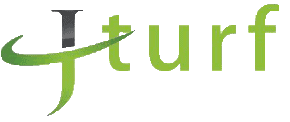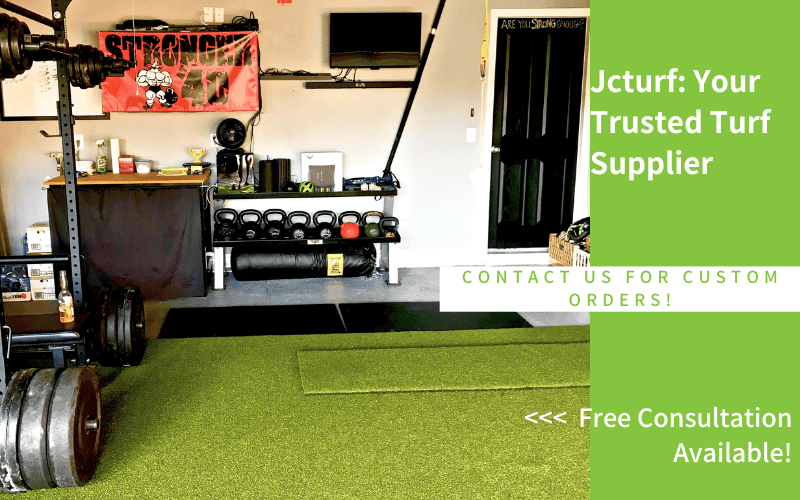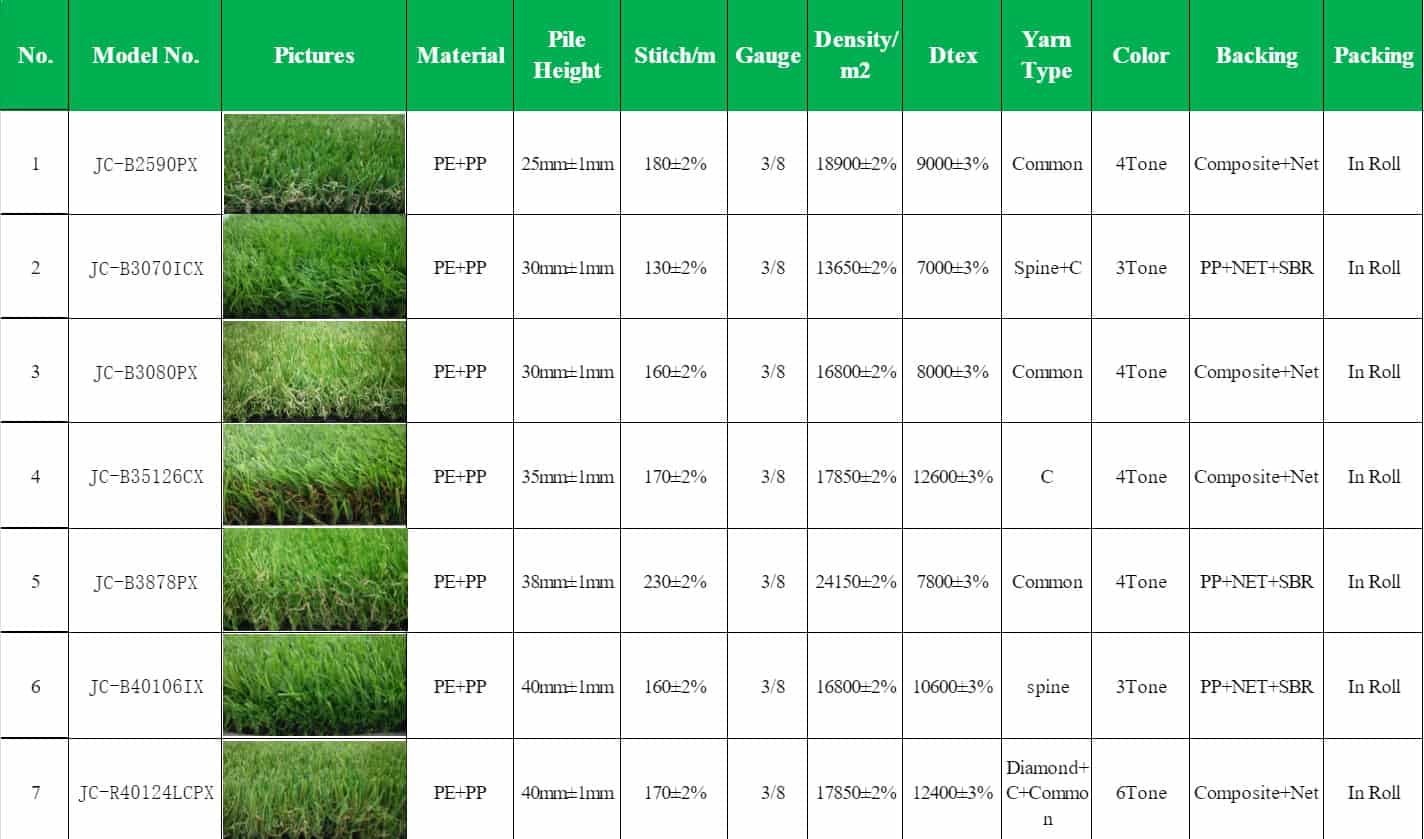What’s the best turf for your garage gym? Start with JCturf’s two most trusted options: JC-G2070ICX and JC-G1590PX. Whether you’re pushing sleds, lifting weights, or doing high-intensity workouts, these models are engineered to handle the pressure—day after day.
In this guide, we’ll walk you through what makes these two stand out, the key features to look for in quality gym turf, and how turf compares to other flooring options like rubber or foam. You’ll also learn how to choose the right model based on your training style and space, how to install it properly, and why JCturf is the go-to supplier for garage gyms worldwide.
JCturf’s Top Recommended Garage Gym Turf Options
If you’re searching for the best turf for a garage gym, start with our two most trusted picks. Both are designed for high-performance training and built to last through daily, heavy use. Whether you need something for sled pushes or a cleaner surface for functional workouts, these options cover it all.
JC-G2070ICX: The All-Rounder for Intense Training
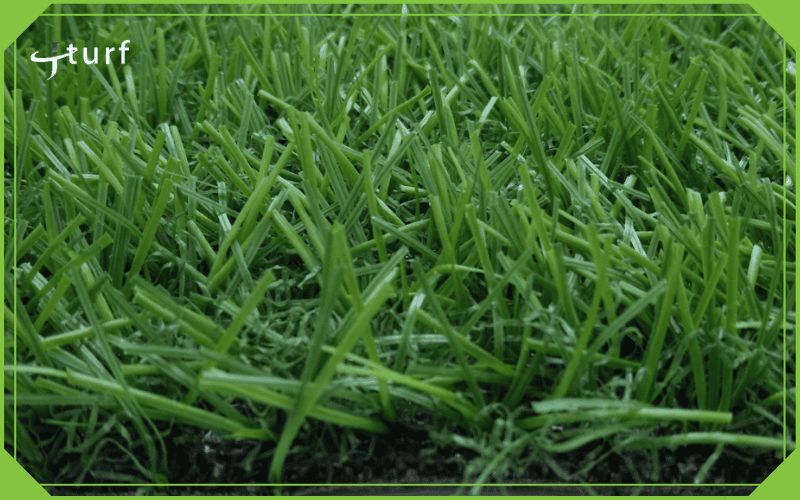
This turf is made for high-impact zones. With a 20mm pile height and spine-structured yarn, it provides upright support and bounce—ideal for sled work, HIIT, or weight drops. The 7000 Dtex fiber is thick and durable, offering excellent wear resistance. It comes in a 3-tone natural color, and the PP+NET+SBR backing enhances grip and shock absorption. It’s tested for high-frequency use and handles repeated impact without flattening. Installation is simple: roll it out on concrete, cut to fit, and you’re set—no adhesive needed unless you prefer it.
JC-G1590PX: Dense and Smooth for Functional Fitness
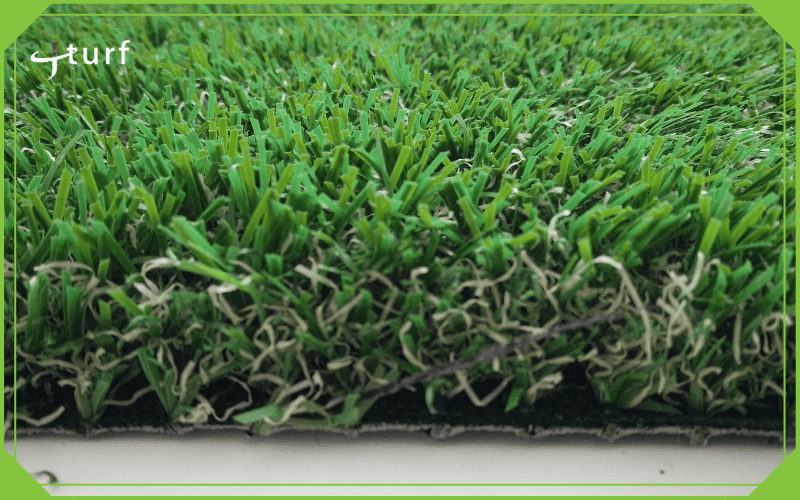
This option is perfect for compact garage gyms or functional training setups. With a 15mm pile height and 9000 Dtex, it delivers a denser, lower profile underfoot—great for CrossFit, jumping exercises, or circuit work. The 4-tone turf offers a realistic look, and the Composite+SBR backing ensures stability on hard surfaces. It won’t shift during movement and stays firm over time. Maintenance is easy: a quick vacuum or rinse keeps it clean. Like all our models, it’s non-toxic and odor-free—built to perform and last.
Quick summary:
Go with JC-G2070ICX if you need bounce, support, and resilience for explosive workouts.
Choose JC-G1590PX if you prefer a tighter, lower turf that stays put and looks clean.
Need a custom size or thickness? Just ask—we offer tailored specs to fit your gym.
Still comparing? Here’s a quick side-by-side breakdown:
| Feature | JC-G2070ICX | JC-G1590PX |
| Pile Height | 20mm – more cushion and rebound | 15mm – firmer and flatter |
| Fiber Density (Dtex) | 7000 – balanced strength and comfort | 9000 – extra tight and durable |
| Surface Feel | Resilient, springy underfoot | Compact, clean, low-profile |
| Best For | Sled pushes, HIIT, weight drops | CrossFit, jumping, functional drills |
| Backing Type | PP+NET+SBR – grip and shock absorption | Composite+SBR – stability and grip |
| Visual Style | 3-tone natural look | 4-tone premium blend |
Key Features to Look for in the Best Turf for Garage Gym
Looking for the best turf for your garage gym? The key lies in the details. From pile height to fiber density and backing structure, these core features directly affect how your turf performs under pressure—literally. Here are six must-know specs that separate average turf from high-performance flooring.
1. Pile Height (Thickness)
This is the height of the grass blades. A taller pile (18–20mm) offers more cushion and shock absorption—great for jumping, HIIT, and impact training. A shorter pile (12–15mm) feels firmer and more stable, which is better for speed, footwork, and lifting.
2. Fiber Density (Dtex)
Dtex measures the thickness and strength of the yarn. A higher Dtex generally indicates a denser and more durable turf—especially useful if you train frequently or use weights, sleds, or heavy equipment.
3. Material Composition (PE, PP, or Mixed)
Polyethylene (PE) feels softer and more forgiving—ideal for high-foot-contact exercises. Polypropylene (PP) is stiffer and often used in tight, low-pile turf. A PE+PP blend balances softness with durability and is often found in versatile gym applications.
4. Yarn Shape (Spine, Flat, Textured)
The shape of the turf fiber affects bounce, grip, and stability. Spine-shaped yarns offer better resilience and upright support. Flat yarns feel smoother and are easier for sled work. Textured or curled types increase surface grip—helpful in dynamic workouts.
5. Backing Structure
Backing keeps the turf in place and helps it absorb pressure. Common types include SBR, PP net, or composite base layers. These options provide solid grip on concrete and help reduce shifting during intense movement.
6. Surface Look and Tone
Multi-tone turf (3-tone or 4-tone) looks more like real grass and hides dust better. While it doesn’t impact performance, it can make your garage gym look cleaner and more polished.
Garage Gym Turf vs. Other Flooring Options
Choosing flooring for your garage gym often comes down to three main options: artificial turf, rubber mats, and foam tiles. Each has pros and cons depending on how you train. Below is a breakdown of how garage gym turf compares to other common choices—so you can decide what fits your needs best.
Artificial Turf: Best for Sleds, Versatility, and Aesthetics
Turf offers a realistic surface with great traction, durability, and visual appeal. It’s ideal for sled pushes, agility work, and high-movement drills. Quality turf resists wear, cushions impact, and stays in place on concrete. It also adds a clean, professional look to your gym. Turf does require precise cutting during installation but needs very little maintenance once laid.
Rubber Flooring: Great for Weightlifting and Simplicity
Rubber mats are the go-to for heavy lifts and barbell drops. They absorb shock well and are easy to install. But they aren’t ideal for sled work—friction is too high—and they can shift over time unless glued down. Aesthetically, they tend to look basic, and cheaper versions can have a strong odor.
Foam Tiles & Stall Mats: Affordable but Limited
Foam tiles are lightweight and inexpensive, but they compress easily and wear down fast under weight or movement. Stall mats (originally for livestock) are heavier and more stable but often uneven and hard to clean. Both are okay for basic setups but not ideal for dynamic training or serious home gyms.
| Feature / Surface | Artificial Turf | Rubber Flooring | Foam Tiles / Stall Mats |
| Best For | Sled pushes, agility, dynamic workouts | Weightlifting, barbell drops | Light training, casual setups |
| Surface Feel | Grippy, cushioned, springy | Firm, shock-absorbing | Soft but compresses under pressure |
| Stability on Concrete | Excellent with proper backing | Good but may shift unless glued | Foam tiles can slip or gap over time |
| Look & Aesthetics | Clean, athletic, polished | Basic, industrial | Uneven or DIY-looking |
| Maintenance | Low – occasional vacuum or rinse | Low – easy to mop | Moderate – can trap dust or absorb sweat |
Is Turf Safe and Practical for Garage Gym Use?
Yes—when chosen correctly, turf is both safe and practical for garage gyms. Many people worry it might be too soft, too slick, or not strong enough for heavy equipment. But high-quality gym turf is built to handle all of that.
Modern turf is designed for traction, compression resistance, and grip on hard surfaces like concrete. With proper backing, it stays firmly in place even during sled pushes or jumps. Unlike foam or loose mats, turf won’t bunch up or slide when installed well.
Moisture? Not a problem. Turf is water-resistant and dries quickly. And unlike rubber tiles, it won’t curl at the edges or absorb odor over time. It also works in spaces with uneven floors—as long as the surface is solid and relatively clean, turf rolls out flat and stays flat.
In short, turf doesn’t just look good. It performs under pressure, stays stable, and makes your garage gym safer—not riskier.
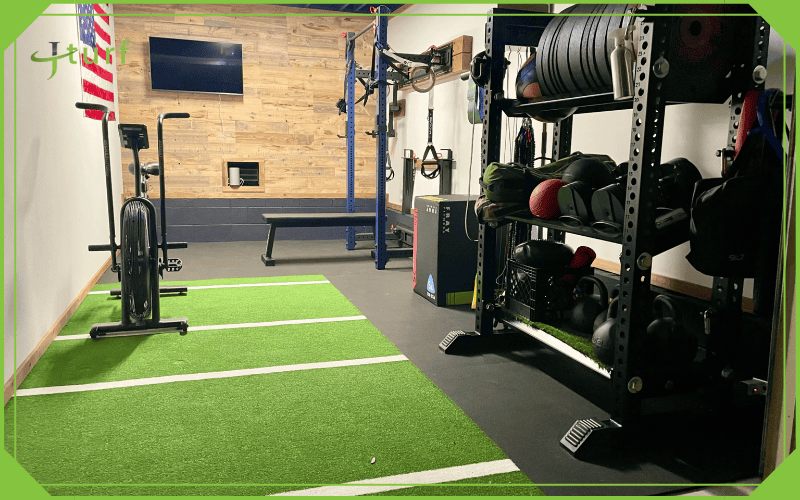
How to Choose the Right Turf for Your Garage Gym
Not sure which turf is right for your garage gym? It depends on how you train, how much space you have, and what you want your gym to feel like. Below are the key factors that help you choose the best turf for your space—whether you’re into sled work, functional fitness, or a mix of everything.
Your Training Style
If you push sleds or do high-impact drills, choose turf with strong rebound and grip (like spine-structured yarn). For CrossFit or lighter workouts, a flatter, denser turf works better.
Space Size and Layout
Small garage? Go for low-pile, compact turf to keep movement efficient. Have room to spare? Medium-pile turf adds comfort for burpees, jumps, and ground work.
Surface and Installation
Turf with strong backing (SBR or composite) works best on concrete or tile. If your surface is uneven, choose turf with some flexibility and a roll-out format—it’s easier to adjust.
Budget vs. Performance
Higher Dtex and multi-layer backing cost more—but they last longer and perform better. If your workouts are light or occasional, an entry-level turf may still do the job.
How to Install Turf in a Garage Gym (Step-by-Step)
Installing turf in a garage gym is simpler than it sounds—especially with pre-cut rolls. Here’s a quick step-by-step guide to help you install it cleanly and safely, without professional help:
- Measure Your Space
Get accurate length and width, and plan for overlaps or odd corners. Order 5–10% extra turf to allow trimming. - Clean the Floor
Sweep and vacuum thoroughly. For best results, patch cracks and make sure the surface is dry and level. - Let the Turf Settle
Unroll the turf and let it sit flat for 1–2 hours. This helps remove curl and makes cutting easier. - Cut to Fit
Use a sharp utility knife to trim edges and around walls or equipment. Leave a slight gap (~1/4 inch) around fixed objects. - Secure the Turf
Apply turf tape or adhesive along seams and edges. Press down firmly. For extra hold, weigh down corners or use baseboards. - Finish Up
Walk the surface to smooth out air pockets. Brush or vacuum the turf upright—your gym is ready to go.
Why Choose JCturf as Your Garage Gym Turf Supplier
Choosing the right garage gym turf supplier means more than just finding artificial grass. At JCturf, we specialize in engineered turf built for high-intensity training—tested in our in-house lab for traction, rebound, and durability under real loads.
Unlike general turf providers, we design models like JC-G2070ICX and JC-G1590PX with spine yarns, SBR composite backings, and dense fibers—tailored for sled work, HIIT zones, or full gym flooring. These same materials are used in basketball courts and sprint tracks, so they’re more than ready for your garage.
What’s more, our turf is made from lead-free, odorless, and UV-resistant PE+PP fibers—safe for indoor spaces and kids around. With in-roll formats, custom cuts, and factory-direct pricing, we keep ordering easy and costs low. No resellers. No guesswork.
Explore our full line of gym turf to see why JCturf is trusted worldwide—for both home gyms and elite performance spaces.
